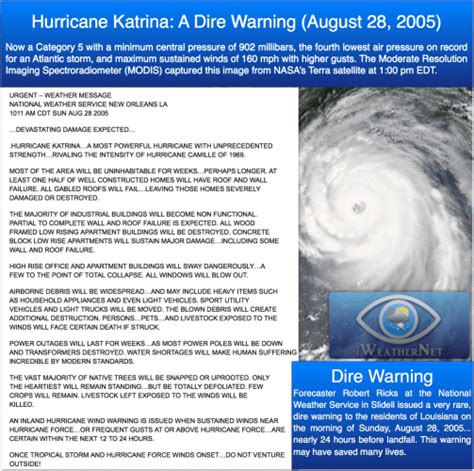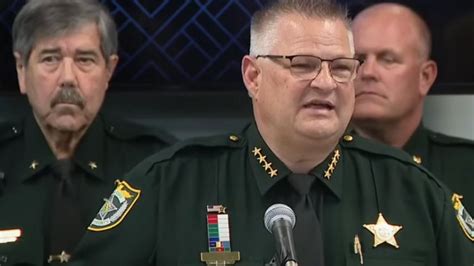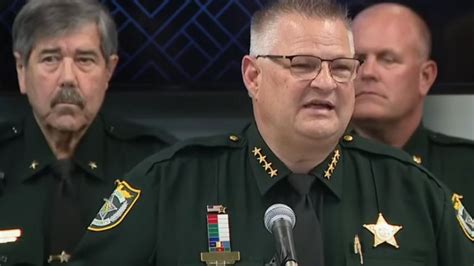
A veteran weatherman in Florida, Al Roker of NBC News, bypassed standard broadcast protocols to deliver an urgent and unscripted warning about the imminent dangers of Hurricane Idalia as it approached the state’s Gulf Coast, emphasizing the potentially catastrophic impacts of storm surge.
Al Roker, reporting live from Tampa, Florida, took an unusual step during his broadcast on Monday, abandoning the conventional, carefully vetted language typically employed by meteorologists in such situations. Visibly concerned, Roker stressed the life-threatening risks posed by the storm surge, deviating from his prepared script to ensure viewers fully understood the gravity of the situation. His actions underscored the critical importance of heeding evacuation orders as Hurricane Idalia barreled towards Florida. This deviation from protocol has sparked discussions about the balance between maintaining a composed on-air presence and conveying the urgency of potentially deadly weather events.
“I’m breaking protocol here because I am scared to death for the people on the west coast of Florida,” Roker declared during his live broadcast. “This is life and death. Do not mess around. You have to get out if you are told to get out.”
Roker’s decision to speak so candidly stemmed from his deep concern that the official messaging might not fully convey the extreme danger associated with the storm surge. He felt compelled to emphasize, in no uncertain terms, that residents in low-lying coastal areas faced a dire threat. His comments were directed particularly at those who might be hesitant to evacuate, either due to complacency, skepticism about the forecast, or a general reluctance to leave their homes.
Meteorologists often rely on carefully crafted language to communicate weather risks, balancing accuracy with the need to avoid causing undue panic. However, Roker’s actions highlighted the potential limitations of this approach when facing a particularly dangerous situation. His decision to “break protocol” was a calculated risk, intended to cut through any potential ambiguity and drive home the message that immediate action was necessary to save lives. The National Weather Service had issued multiple warnings about the potential for “catastrophic” storm surge, but Roker felt the need to amplify those warnings with his own personal appeal.
This isn’t the first time Roker has taken a strong stance during severe weather coverage. He has previously used his platform to advocate for preparedness and to call out those who downplay the risks of hurricanes. His passion for weather safety is well-known, and his decision to deviate from protocol was seen by many as a reflection of his genuine concern for the well-being of the public.
The response to Roker’s actions has been largely positive, with many viewers praising him for his candor and for putting public safety above adherence to traditional broadcasting norms. Some experts have suggested that his approach could serve as a model for other meteorologists in similar situations, encouraging them to be more direct and emphatic when conveying potentially life-saving information. However, there have also been some discussions about the potential downsides of deviating from established protocols, including the risk of creating confusion or undermining public trust in official sources of information.
Hurricane Idalia made landfall on Wednesday morning as a powerful Category 3 storm, bringing destructive winds, torrential rain, and a significant storm surge to Florida’s Big Bend region. While the full extent of the damage is still being assessed, initial reports indicate widespread flooding, power outages, and significant property damage. The storm’s impact underscores the importance of heeding warnings from meteorologists and emergency officials, and Roker’s actions serve as a reminder that sometimes, a more direct and urgent message is needed to ensure that people take the necessary steps to protect themselves and their families.
The incident also brings to the forefront the psychological factors influencing evacuation decisions. Studies have shown that people often underestimate the risks posed by natural disasters, particularly if they have experienced similar events in the past without suffering significant harm. This phenomenon, known as the “normalcy bias,” can lead to dangerous complacency and a reluctance to evacuate even when facing a clear and present danger. Roker’s impassioned plea was aimed at overcoming this bias and convincing people to take the threat seriously.
Furthermore, the effectiveness of risk communication depends on a variety of factors, including the credibility of the source, the clarity of the message, and the emotional context in which the information is received. Roker’s long career as a trusted weather forecaster undoubtedly contributed to the impact of his message. His reputation for accuracy and his genuine concern for public safety lent credibility to his warnings, making them more likely to be heeded by viewers. The emotional tone of his broadcast, while unconventional, also likely played a role in capturing the audience’s attention and conveying the urgency of the situation.
In the aftermath of Hurricane Idalia, it is likely that there will be renewed discussions about the best practices for communicating weather risks to the public. Roker’s actions have opened up a dialogue about the potential benefits of a more direct and emphatic approach, particularly in situations where lives are at stake. While it is important to maintain accuracy and avoid causing undue panic, it is also crucial to ensure that people fully understand the potential dangers they face and take the necessary steps to protect themselves. The lessons learned from Hurricane Idalia and the response to Roker’s broadcast could help to improve weather communication strategies in the future, potentially saving lives in the process.
The role of social media in disseminating weather information cannot be overlooked. While traditional media outlets like television and radio remain important sources of information, social media platforms have become increasingly influential in shaping public perception of weather events. Meteorologists and emergency officials often use social media to share updates, warnings, and safety tips. However, the spread of misinformation and rumors on social media can also pose a challenge. It is important for people to rely on credible sources of information and to be wary of unverified reports circulating online. Roker himself utilizes social media extensively to share weather updates and engage with the public, further amplifying his message and reaching a wider audience. His decision to “break protocol” on television was also widely shared and discussed on social media, further highlighting the importance of his message.
The incident also raises broader questions about the role of media in communicating risk during times of crisis. Journalists and broadcasters have a responsibility to provide accurate and timely information, but they also have a responsibility to avoid sensationalism and to maintain a sense of calm. Balancing these competing demands can be challenging, particularly when dealing with potentially catastrophic events. Roker’s actions suggest that there may be times when a more direct and emotionally charged approach is warranted, but it is important to carefully consider the potential consequences before deviating from established protocols. The goal should always be to provide the public with the information they need to make informed decisions about their safety, while also avoiding undue panic and maintaining public trust.
Looking ahead, it is likely that the debate about weather communication strategies will continue, particularly as climate change leads to more frequent and intense extreme weather events. As the risks associated with hurricanes, floods, wildfires, and other natural disasters increase, it will be increasingly important to find effective ways to communicate those risks to the public. Roker’s actions during the Hurricane Idalia coverage have provided a valuable case study for examining the potential benefits and drawbacks of different approaches to risk communication. By learning from this experience, meteorologists, emergency officials, and journalists can work together to develop more effective strategies for protecting communities from the devastating impacts of extreme weather. The key will be to strike a balance between accuracy, clarity, urgency, and emotional resonance, ensuring that people receive the information they need to make informed decisions and take the necessary steps to protect themselves and their families.
The economic impact of hurricanes, especially in states like Florida, is substantial. Beyond the immediate costs of damage repair and emergency response, there are long-term economic consequences that can affect tourism, agriculture, and other key industries. Effective communication of hurricane risks is therefore not just a matter of saving lives, but also of protecting livelihoods and ensuring the economic resilience of affected communities. When people are well-informed about the potential dangers, they are more likely to take proactive steps to mitigate the risks, such as reinforcing their homes, purchasing flood insurance, and developing evacuation plans. These measures can significantly reduce the economic impact of a hurricane, minimizing damage and facilitating a faster recovery. Roker’s efforts to emphasize the severity of Hurricane Idalia were therefore not only important for protecting lives, but also for safeguarding the economic well-being of the communities in its path.
Furthermore, the long-term psychological effects of experiencing a major hurricane can be significant. Many people who have lived through such events suffer from post-traumatic stress disorder (PTSD), anxiety, and depression. Effective communication of hurricane risks can help to mitigate these psychological impacts by empowering people to take control of their situation and make informed decisions about their safety. When people feel prepared and informed, they are less likely to experience the sense of helplessness and fear that can contribute to long-term psychological problems. Roker’s efforts to emphasize the importance of evacuation and preparedness were therefore not only important for protecting physical safety, but also for promoting mental well-being.
The story of Al Roker’s “breaking protocol” during Hurricane Idalia coverage is a reminder that effective communication is a critical component of disaster preparedness and response. While there is no one-size-fits-all approach to risk communication, it is clear that meteorologists, emergency officials, and journalists must be willing to adapt their strategies to meet the specific needs of the situation. In some cases, this may mean deviating from established protocols and adopting a more direct and emotionally charged approach. The key is to prioritize the safety and well-being of the public, and to ensure that people receive the information they need to make informed decisions about their lives and livelihoods. Roker’s actions have sparked a valuable conversation about the best practices for communicating weather risks, and the lessons learned from this experience will undoubtedly help to improve disaster preparedness and response in the future.
The availability of resources for hurricane preparedness is also a key factor in determining the extent of the damage and the number of lives lost. Low-income communities often lack the resources to adequately prepare for hurricanes, making them more vulnerable to the impacts of these storms. Access to affordable housing, transportation, and insurance are all critical for ensuring that people can evacuate safely and rebuild their lives after a hurricane. Government agencies and non-profit organizations play a vital role in providing these resources, but more needs to be done to address the underlying inequalities that make some communities more vulnerable than others. Roker’s efforts to emphasize the importance of evacuation were particularly important for these vulnerable communities, as they may have limited options for protecting themselves and their families.
Finally, it is important to recognize that hurricane preparedness is not just a matter of individual responsibility, but also a matter of community responsibility. Neighbors helping neighbors, volunteers assisting with evacuation efforts, and local businesses providing resources to those in need are all essential for ensuring that communities can weather these storms together. By working together and supporting each other, communities can build resilience and minimize the impacts of hurricanes. Roker’s actions have inspired many people to take action and help their neighbors, demonstrating the power of community spirit in the face of adversity.
Frequently Asked Questions (FAQs)
1. Why did Al Roker “break protocol” during his Hurricane Idalia broadcast?
Al Roker stated he was “scared to death” for people on Florida’s west coast due to the potential catastrophic impact of storm surge. He felt compelled to deliver a more direct and urgent warning than typical broadcast protocols allow, to emphasize the life-threatening danger and encourage immediate evacuation for those in affected areas. His intention was to cut through any potential complacency or misunderstanding about the severity of the threat.
2. What specific dangers was Al Roker trying to highlight with his urgent warning?
Roker primarily focused on the dangers of storm surge, the abnormal rise of water generated by a storm, over and above the predicted astronomical tides. He emphasized that storm surge could inundate low-lying coastal areas, posing a significant risk of drowning and structural damage. He also touched on the dangers of high winds and flooding rain.
3. What has been the general reaction to Al Roker’s decision to deviate from standard broadcast protocols?
The reaction has been overwhelmingly positive. Many viewers and experts have praised Roker for prioritizing public safety and delivering a candid, urgent message. Some have suggested that his approach could serve as a model for other meteorologists in similar situations. However, there have also been discussions about the potential downsides of deviating from established protocols, such as the risk of creating confusion or undermining public trust in official sources of information.
4. What is storm surge, and why is it considered so dangerous during a hurricane?
Storm surge is the abnormal rise in seawater level during a storm, caused primarily by the storm’s winds pushing water towards the shore. It’s dangerous because it can inundate coastal areas rapidly, causing widespread flooding, structural damage, and posing a significant threat to life. Storm surge can be particularly devastating when it coincides with high tide. The height of the surge depends on several factors, including the storm’s intensity, size, forward speed, and the shape of the coastline.
5. What steps can people take to prepare for a hurricane and protect themselves from storm surge?
- Heed evacuation orders: If authorities order an evacuation, leave immediately. Storm surge can arrive quickly and unexpectedly.
- Know your evacuation zone: Determine if you live in a designated evacuation zone.
- Develop a family emergency plan: Plan where you will go, how you will communicate, and what supplies you will need.
- Gather emergency supplies: Include food, water, medication, a first-aid kit, a flashlight, a NOAA weather radio, and other essential items.
- Secure your home: Protect windows with shutters or plywood, bring in outdoor furniture and objects, and trim trees and shrubs.
- Stay informed: Monitor weather updates from reliable sources, such as the National Weather Service and local news outlets.
- Consider flood insurance: Standard homeowners insurance typically does not cover flood damage.
- Charge electronic devices: Ensure phones and other devices are fully charged in case of power outages.
- Help neighbors: Check on elderly or disabled neighbors and offer assistance.
- If you cannot evacuate, find a safe place: If evacuation is not possible, seek shelter in an interior room on the highest level of your home, away from windows.









